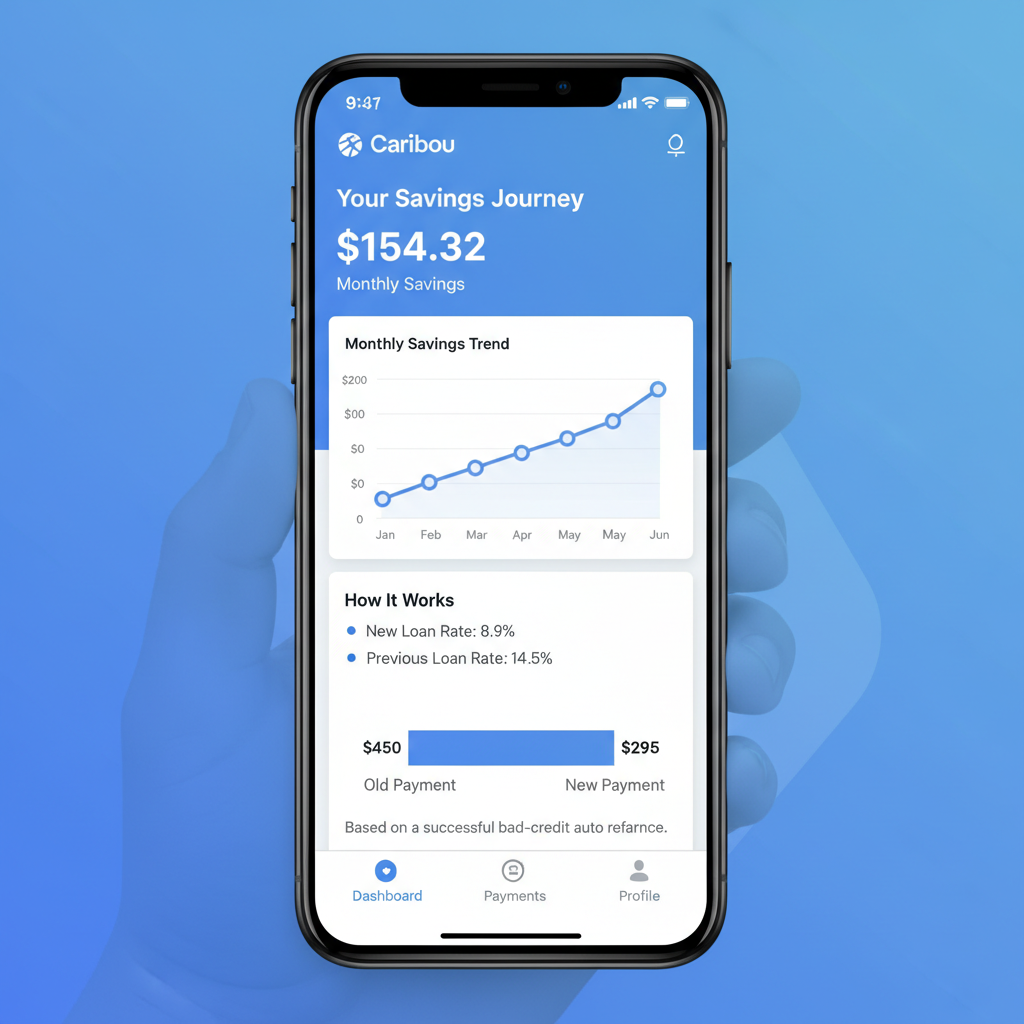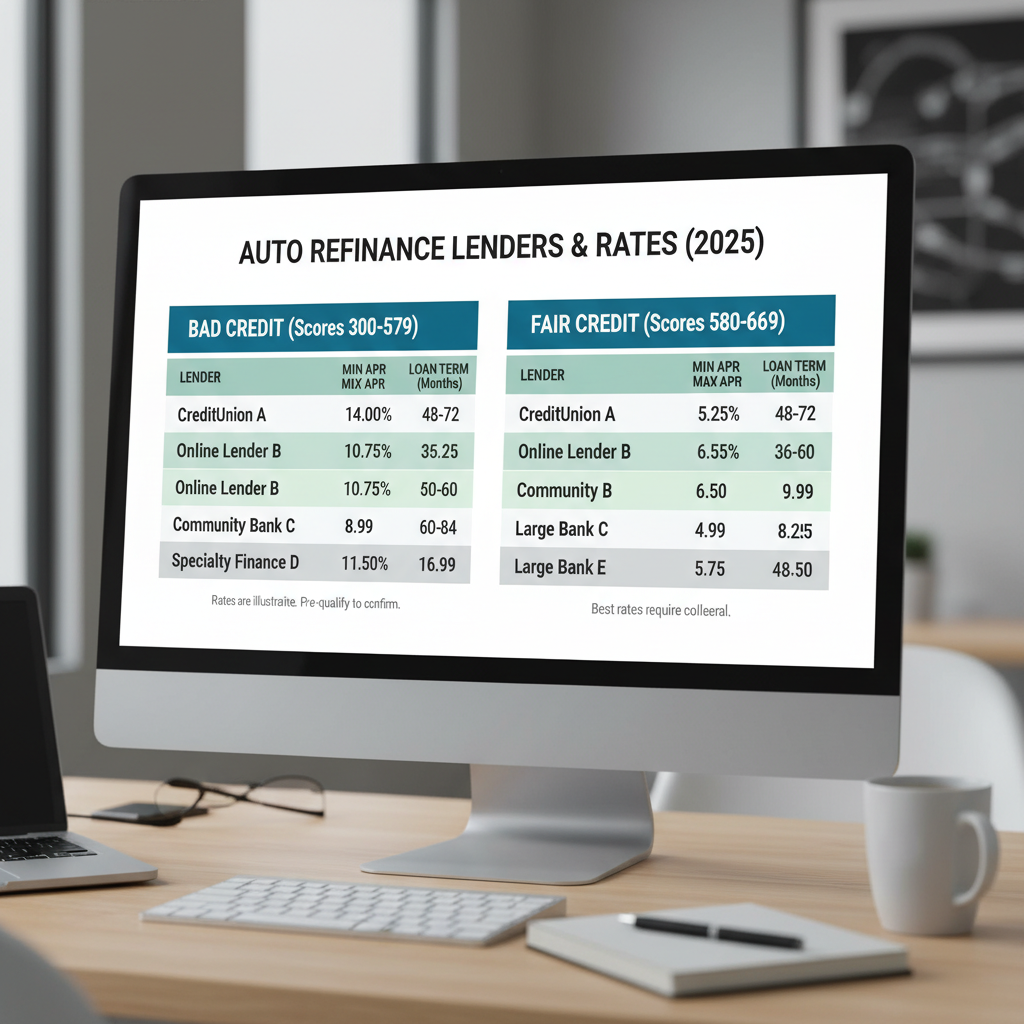Bad or Fair Credit? Why 2025 Might Be Your Best Chance Yet to Refinance Your Car and Slash Your Payment
Feeling stuck with a high car payment? If your credit is less than perfect, you may feel like affordable auto refinancing is off the table. Yet, thanks to dramatic shifts in lender risk models and a surge of new products targeting fair and bad credit, 2025 might just be your golden moment to lock in a lower rate and monthly payment—even if your score is below 600.
Contents
- 1 The 2025 Auto Refinance Boom: What’s Driving Opportunity for Bad and Fair Credit Borrowers?
- 2 Typical APR Reductions and Monthly Savings: 2025 Data Snapshot
- 3 What’s Changed: New Lender Risk Models & 2025 Underwriting Criteria
- 4 Step-by-Step: How to Qualify for a Lower Car Payment—Even With Bad or Fair Credit
- 5 Current Products and Services: Who’s Competing for Your Business?
- 6 Act Now: Your 2025 Window May Not Last
The 2025 Auto Refinance Boom: What’s Driving Opportunity for Bad and Fair Credit Borrowers?
Recent market data shows lenders are competing aggressively for subprime and fair-credit customers. According to LendingTree, the average monthly savings from refinancing in 2025 is $142, with total lifetime savings topping $1,300 for many borrowers—even those with FICO scores under 600[3]. Caribou, a leader in bad-credit auto refinancing, claims their customers save an average of $151/month[6].
Why the sudden change? Three trends stand out:

- Risk Model Upgrades: Lenders like Ally and Lending Club are using AI-driven credit models that look beyond your score, factoring stable income, payment history, and car equity[5][8].
- APR Drops for Fair Credit: Recent Fed policy and competition mean APRs for fair-credit borrowers (scores 580-670) dropped by 0.7-1.3% in early 2025, according to SoFi and LendingTree[2][3].
- Expanded Product Lines: Leading lenders now offer dedicated subprime refinance programs, including OpenRoad, Capital One Auto Refinance, RefiJet, and Digital Federal Credit Union (DCU), with flexible terms and co-borrower options[3][4].

Typical APR Reductions and Monthly Savings: 2025 Data Snapshot
| Lender | Target Credit Score | Average APR (2024) | Average APR (2025) | Avg. Monthly Payment Reduction |
|---|---|---|---|---|
| Caribou | 500+ | 13.1% | 11.6% | $151 |
| Capital One | 540+ | 12.5% | 11.1% | $139 |
| DCU | 580+ | 11.9% | 10.5% | $132 |
| RefiJet | 520+ | 13.5% | 12.2% | $129 |
FOMO alert: These rates are still below recent multi-year averages, and lenders warn they may tighten criteria if delinquency rates rise later in the year.
What’s Changed: New Lender Risk Models & 2025 Underwriting Criteria
Forget the myth that a low FICO automatically kills your chances. In 2025, lenders like Ally, Caribou, and LendingClub score borrowers on:
- Stable employment/income (minimum $2,000/month)
- Current on car payments (no 30+ day late payments in last 6 months)
- Car equity (your car’s value minus loan balance)
- Vehicle age/mileage limits (usually under 10 years, less than 120,000 miles)[8]
If you meet these criteria, lenders may overlook a credit score as low as 500 and still offer a lower payment[3][6].
Case Study: How One Fair Credit Borrower Saved $143/Month
Jasmine, a Texas paralegal with a FICO of 603, refinanced a $21,000 auto loan through Caribou. Her APR dropped from 12.7% to 10.8%, slashing her payment from $418 to $275—annual savings: $1,716. She qualified thanks to her stable job, on-time payments, and her car’s resale value ($16,500 owed vs. $19,000 value).


Step-by-Step: How to Qualify for a Lower Car Payment—Even With Bad or Fair Credit
- Check Your Credit and Car Equity. Free tools like LendingTree Spring help estimate your score and car value instantly[3]. Lenders often want to see a car worth more than your payoff balance.
- Shop Multiple Lenders. Don’t settle for one quote. Compare offers from Caribou, Ally, RefiJet, DCU, and Lending Club. Pre-qualify online with no impact to your credit[5][8].
- Consider a Cosigner. If your credit is below 580, adding a cosigner with good credit can cut your rate by 1-2%[2][3].
- Gather Required Documents. You’ll need proof of income, vehicle details (VIN, mileage), and a 10-day payoff statement from your current lender.
- Apply and Review Terms Carefully. Watch for fees, prepayment penalties, and make sure the new monthly payment fits your budget.[1][3]
- Finalize and Start Saving. Once approved, your new lender pays off the old loan, and you make lower monthly payments going forward.
Expert Tips to Maximize Savings and Approval Odds
- Don’t extend your loan term too far— a longer term means lower payments but higher total interest[2][3].
- Stay current on all bills for 3-6 months before applying.
- Ask about special refinance offers—some lenders run limited-time promotions for fair-credit borrowers (e.g., DCU’s 0.5% APR discount for new members).
- Use social proof: Caribou’s site features hundreds of recent testimonials from borrowers with scores under 620 who cut payments by $100+/month[6].
Current Products and Services: Who’s Competing for Your Business?
- Caribou: Dedicated bad-credit refinancing, average savings $151/month, rates from 6.99% APR[6].
- Ally Auto: Pre-qualify online in minutes, competitive rates for fair-credit borrowers[5].
- RefiJet: Subprime refinance specialist, flexible terms, co-borrower options[3].
- DCU: Up to 84 months, refinance up to 130% of car value, same APR for new/used/refinance loans[4].
- Lending Club: Vehicles under 10 years/120,000 miles, fast online pre-approval[8].
Price anchoring: Most competitors advertise rates 1-2% lower than traditional banks for qualifying borrowers. With rates likely to rise later in 2025, urgency is key.

Act Now: Your 2025 Window May Not Last
Lenders are actively seeking new borrowers while subprime delinquency remains low. But industry experts warn: if late payments increase, approval criteria will tighten and rates will rise. Waiting could mean missing out on today’s deals.
Ready to cut your payment? Shop lenders, check your equity, and consider a cosigner. The refinancing boom is likely to last only as long as competition remains fierce—and for many, this is the best chance in years to ditch a high car payment.

Act today—because 2025 may be your best shot yet.

